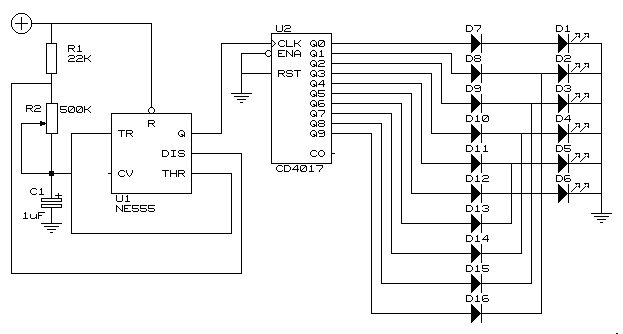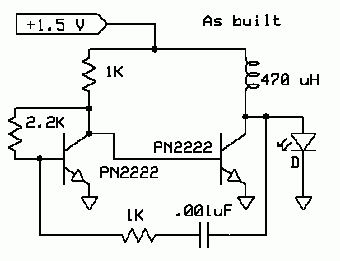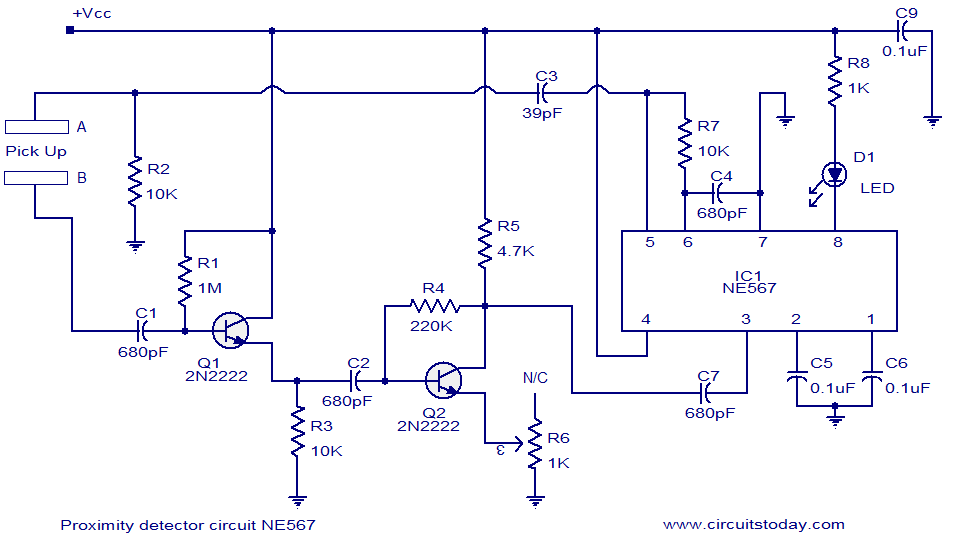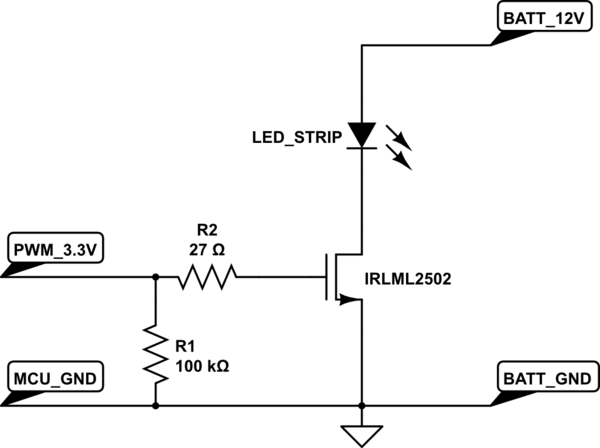
LED Night Lamp
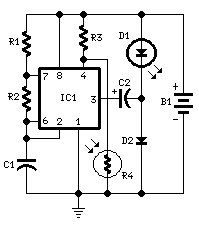
This circuit is usable as a Night Lamp when a wall mains socket is not available to plug-in an ever running small neon lamp device. In order to ensure minimum battery consumption, one 1.5V cell is used, and a simple voltage doubler drives a pulsating ultra-bright LED: current drawing is less than 500µA. Ultra-low current drawing 1.5V battery supply. More: An optional Photo resistor will switch-off the circuit in daylight or when room lamps illuminate, allowing further current economy. This device will run for about 3 months continuously on an ordinary AA sized cell or for around 6 months on an alkaline type.
The described circuit functions as a battery-operated night lamp, designed to operate efficiently without the need for a wall mains socket. The primary power source is a single 1.5V cell, typically an AA battery, which is chosen for its availability and compact size. To enhance the output voltage for driving the LED, a voltage doubler circuit is employed. This circuit configuration typically consists of capacitors and diodes that work together to convert the low voltage from the battery into a higher voltage, suitable for powering an ultra-bright LED.
The ultra-bright LED is designed to pulsate, which not only enhances visibility in low-light conditions but also contributes to lower power consumption. The current draw of the circuit is maintained at less than 500µA, ensuring that the device remains energy-efficient. This low current consumption allows for extended battery life, with the device capable of operating continuously for approximately three months on a standard AA battery and up to six months with an alkaline variant.
An optional photoresistor can be integrated into the circuit to further optimize energy use. This component functions as a light sensor, detecting ambient light levels. When sufficient light is present, such as during the day or when room lamps are turned on, the photoresistor effectively switches off the circuit, preventing unnecessary battery drain. This feature significantly enhances the overall efficiency of the night lamp, making it an ideal solution for users seeking a reliable and low-maintenance lighting option in dark environments.
Overall, the circuit design emphasizes simplicity and efficiency, making it suitable for various applications where a constant power supply is not feasible.This circuit is usable as a Night Lamp when a wall mains socket is not available to plug-in an ever running small neon lamp device. In order to ensure minimum battery consumption, one 1.5V cell is used, and a simple voltage doubler drives a pulsating ultra-bright LED: current drawing is less than 500µA.Ultra-low current drawing 1.5V battery supply.
An optional Photo resistor will switch-off the circuit in daylight or when room lamps illuminate, allowing further current economy. This device will run for about 3 months continuously on an ordinary AA sized cell or for around 6 months on an alkaline ty
🔗 External reference
The described circuit functions as a battery-operated night lamp, designed to operate efficiently without the need for a wall mains socket. The primary power source is a single 1.5V cell, typically an AA battery, which is chosen for its availability and compact size. To enhance the output voltage for driving the LED, a voltage doubler circuit is employed. This circuit configuration typically consists of capacitors and diodes that work together to convert the low voltage from the battery into a higher voltage, suitable for powering an ultra-bright LED.
The ultra-bright LED is designed to pulsate, which not only enhances visibility in low-light conditions but also contributes to lower power consumption. The current draw of the circuit is maintained at less than 500µA, ensuring that the device remains energy-efficient. This low current consumption allows for extended battery life, with the device capable of operating continuously for approximately three months on a standard AA battery and up to six months with an alkaline variant.
An optional photoresistor can be integrated into the circuit to further optimize energy use. This component functions as a light sensor, detecting ambient light levels. When sufficient light is present, such as during the day or when room lamps are turned on, the photoresistor effectively switches off the circuit, preventing unnecessary battery drain. This feature significantly enhances the overall efficiency of the night lamp, making it an ideal solution for users seeking a reliable and low-maintenance lighting option in dark environments.
Overall, the circuit design emphasizes simplicity and efficiency, making it suitable for various applications where a constant power supply is not feasible.This circuit is usable as a Night Lamp when a wall mains socket is not available to plug-in an ever running small neon lamp device. In order to ensure minimum battery consumption, one 1.5V cell is used, and a simple voltage doubler drives a pulsating ultra-bright LED: current drawing is less than 500µA.Ultra-low current drawing 1.5V battery supply.
An optional Photo resistor will switch-off the circuit in daylight or when room lamps illuminate, allowing further current economy. This device will run for about 3 months continuously on an ordinary AA sized cell or for around 6 months on an alkaline ty
🔗 External reference
